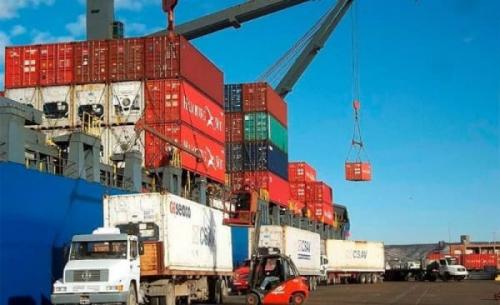How 2021 is shaping up
Why does inflation come under discussion when US and EU consumer price indices are stable and what effects does this have on international interest rates?
- Análisis

The mid-year news is that global inflation is rising rapidly in a year of uneven growth rates, higher than estimated in the US and the EU and lower for all but the Asian economies, which continued to grow in 2020. The question is why inflation comes under discussion when consumer price indices in the US and the EU are stable and what effects such discussions have on international interest rates.
Supply bottlenecks and inflation
The year 2021 began with very optimistic economic projections for the West and the East, which never experienced contractions in 2020. The IMF projected a US recovery at 6.4%, readjusted to 6.7% in June by the US Office of the Budget (OMB). For the Eurozone, it went at 3.9%, adjusted to 4.3% by the EU. Latin America should grow by 3.7%.
However, in July 2020, the world container traffic surged, perhaps reflecting faster G7 growth. What appeared to be a spike related to physical commodity speculation turned out to be the result of booming US demand, which jumped from importing $170 billion in June 2020 to importing $239 billion in June 2021, increasing 40% between June 2020-2021.
This jump in US imports of Chinese origin led to a boom in shipping and demand for containers and port user fees. According to the Freightos Baltic Index (FBX): the Global Container Freight Index rose from $2,000 to $6,000 between June 2020 and 2021 for East China's West US route. This tripling of the cost per container reflects the total transport cost. Additionally, there are bottlenecks with shipping ports in China, where queues for ships to enter port can take up to X days and then queues at ports of disembarkation in the US. So what should take N days now takes M days.
According to Freightos' weekly Baltic Index Update, prices between Asia and the US West Coast (FBX01 daily) increased by 178 days. (FBX01 daily) were 178% higher than at the same time last year. Prices between Asia and the US East Coast (FBX03 Daily) are 215% higher now than twelve months ago. Elsewhere, the port of Yantian is beginning the clearance of stuck ships and containers, while shippers face increasing congestion at the major European ports of Hamburg and Rotterdam. Port officials point to delays and unforeseen arrival times as the cause of congestion. It is another sign of the interconnectedness of shipping: delays elsewhere due to other reasons - such as Suez and now Yantian - disrupt operations at different ports, leading to further delays and disruptions, as has happened over the past year.
In the absence of additional capacity to solve the problem, delays tie up supply and continue to pressure tariffs. Importers and exporters continue to pay premiums, now essential to secure space on some routes. Even corporate shippers with new long-term maritime contracts - often signed at double last year's rates - cannot move all their containers without paying more, if at all, says Freightos Baltic Index Update, Jun 22 2021.
Drought and inflation
On top of the news of rising transport costs and bottlenecks creating downstream production problems, there is now a problem of droughts within the concept of just-in-time delivery in global value chains. The Western United States has moderate to extreme droughts, affecting crops in that region of the country. Neighbouring Mexico, according to NASA, has experienced one of the most extended and intense droughts in decades, with 85% of the country facing drought conditions as of Apr 15 2021. The mayor of Mexico City called it the worst drought in 30 years for the city, home to 9 million people. This drought impacts the prices of agricultural products, which have seen an increase in the first half of 2021. Water reserves are at 25% of their average level, which impacts irrigation.
According to Mexico's National Meteorological Service, the northwest and northeast have recently gone from severe to extreme drought. Some crops, such as white maize in Sinaloa, are expected to be affected. Agricultural analysts expect the production of some crops involved, such as white maize in Sinaloa. The drought is also affecting Brazil and Argentina, major soybean producers, impacting the price of this food commodity that serves as animal fodder. Soybean is the primary source of vegetable protein and an essential component of animal feed used for animal nutrition in the world.
Central banks and inflation
Central banks are currently preparing to readjust interest rates to counteract the inflation, currently at their lowest absolute levels in decades. The Federal Reserve brought forward the timing of the next interest rate hike because of the increase in the US consumer index to 2.4% for the year 2021 as a whole. Between May 2020 and May 2021, it has raised rates by 5%. The central bank unanimously left its benchmark short-term interest rate anchored near zero but with rumours that it will rise by 2023. In the European Union, inflation is around 1.9%, and there is no sign that the ECB will raise interest rates.
Num.21 Año 2020, 5 de julio
- Oscar Ugarteche, Principal Researcher "C", IIEc-UNAM, Conacyt SNI III, Coordinator of the obela.org project.
Del mismo autor
- El multilateralismo bipolar 08/03/2022
- Bipolar multilateralism 07/03/2022
- What does 2022 bring? Uncertainty 31/01/2022
- ¿Qué trae el 2022? Incertidumbre 31/01/2022
- The most expensive Christmas of the century... (so far) 20/01/2022
- La navidad más cara del siglo (hasta ahora) 20/01/2022
- Lo que pasó en el 2021 10/01/2022
- What happened in 2021 10/01/2022
- Estados Unidos: el elefante en la habitación 08/11/2021
- The elephant in the room 07/11/2021
